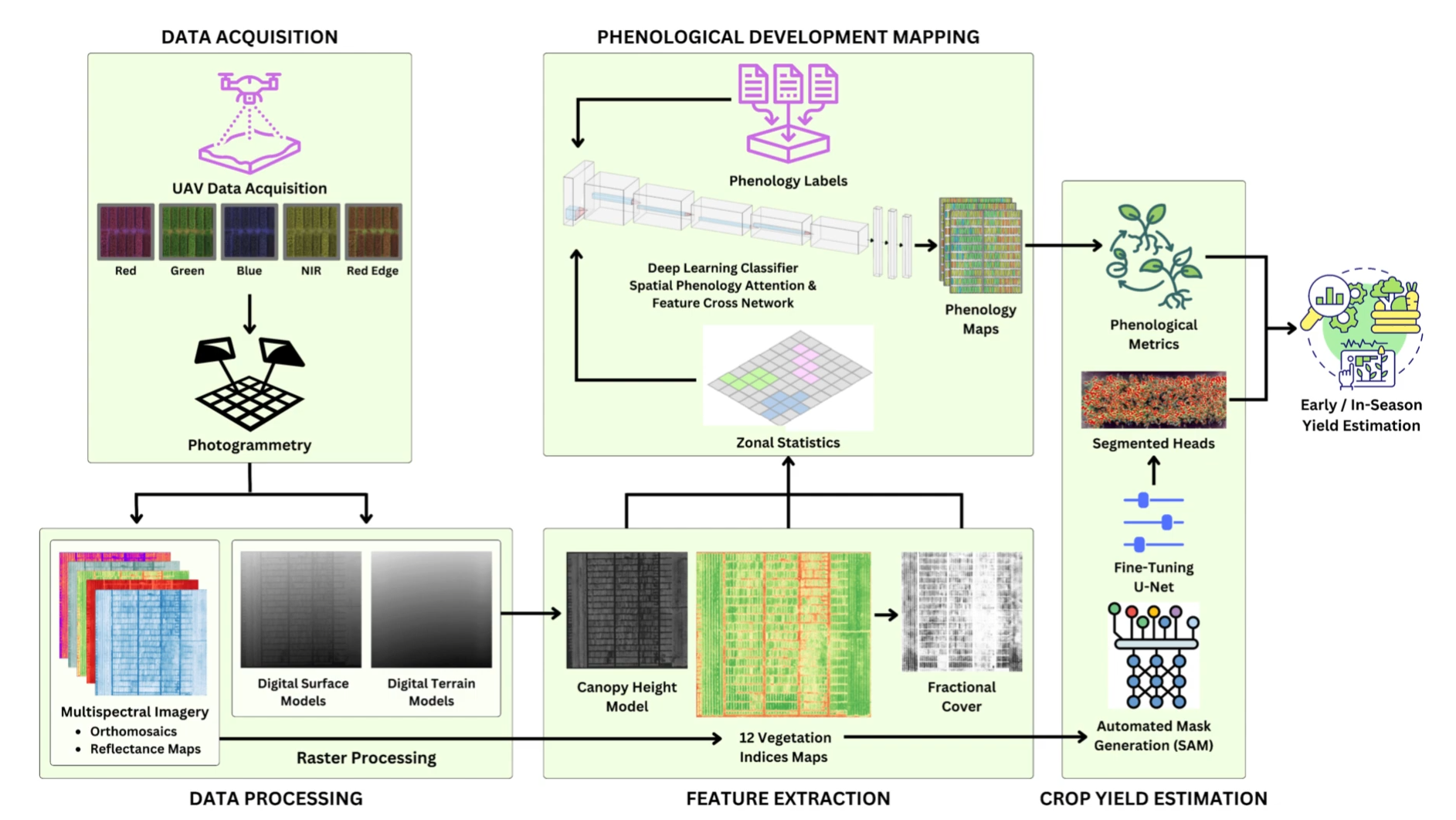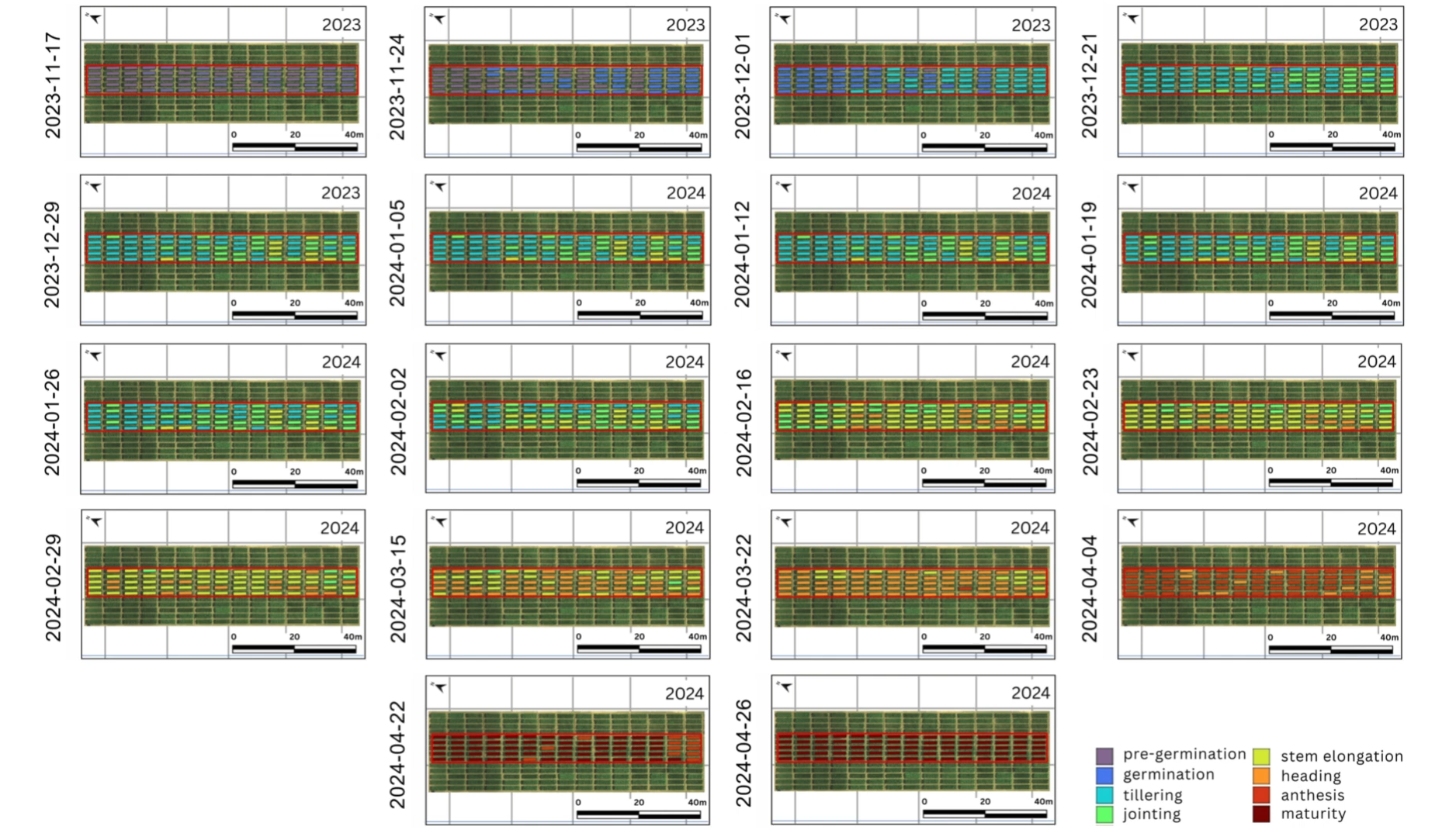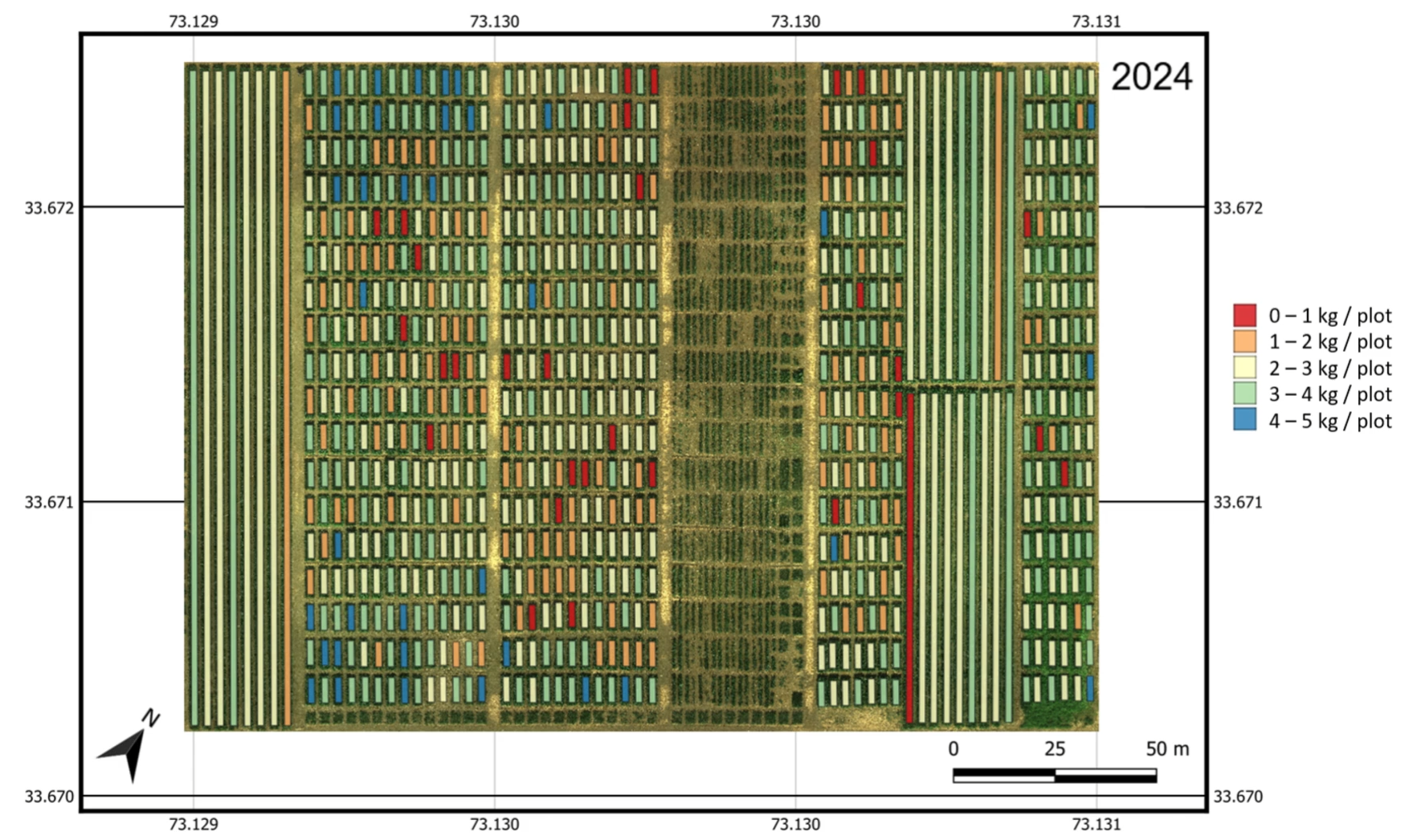Phenology-Aware In-Season Yield Estimation Through Multispectral Imagery & Deep Networks
Agricultural productivity is fundamental for global food security amid population growth and climate variability. With an ever-rising demand for sustainable farming, efficient crop monitoring solutions increasingly rely on data-centric approaches and growth simulation techniques. Understanding crop phenology is key to agronomic planning and yield optimization. It involves studying the growth stages of crops and how they interact with environmental conditions. It significantly influences decisions related to irrigation, fertilization, pest control, disease control, and harvesting. Accurate large-scale phenological estimation facilitates optimal resource use, cost reduction, and inter-variety performance analysis. However, traditional approaches such as manual field observations are highly time-consuming. Moreover, they are prone to error and spatial limitations, highlighting the need for scalable and precise phenological monitoring.

Phenology is a fundamental factor influencing yield formation, crop health, and stress response mechanisms. Crop health is closely tied to phenology because different growth stages exhibit varying levels of vulnerability to biotic and abiotic stressors. Flowering and grain-filling stages are particularly susceptible to drought and disease pressure. The ability to precisely track phenological transitions enables agronomists to make decisions that directly impact productivity in high-throughput phenotyping programs. The timing and duration of phenological stages affect the efficiency of critical agronomic interventions, including but not limited to irrigation, fertilization, pest & disease management, and harvest planning. Different growth stages have varying water requirements. Accurate phenology estimation ensures that irrigation is applied at the right time, preventing water stress or overuse. Nutrient demand fluctuates throughout the growing season. A phenology-aware fertilization strategy enhances nutrient uptake efficiency, reducing excess fertilizer application and its environmental impact. Certain phenological stages are more susceptible to pests, diseases, and abiotic stressors. Early detection enables timely preventive measures. Furthermore, harvest timing is critical for maximizing yield quality and minimizing losses. An understanding of phenology ensures optimal scheduling. Given the importance of phenology in yield formation, the ability to estimate these stages non-destructively, accurately, and at scale is highly valuable in agricultural monitoring.

Accurate crop yield prediction is one of the most sought-after goals in agricultural research and farming. Traditional yield estimation methods primarily rely on two things: (1) statistical models that do not adapt well to current climatic variations and (2) final-stage yield assessments, which only provide relevant information after harvest. In-season yield estimation, however, enables dynamic decision-making, allowing farmers and policymakers to predict and optimize yield outcomes before harvest. Estimating yield at various growth stages helps identify crop stress early and also supports better resource use and supply chain planning. Detecting yield-affecting stress factors (drought, nutrient deficiencies, pest infestations) in real-time enables timely interventions. Farmers can adjust fertilizer, pesticide, and irrigation applications based on yield forecasts, reducing waste and costs. Governments, exporters, and agribusinesses can forecast grain production, helping in trade and storage decisions. To improve in-season yield estimation, it is critical to incorporate phenological information, as different stages contribute differently to final grain formation. By integrating phenology-aware features into yield models, more robust, generalizable, and high-precision predictions are made possible.

Traditional phenology assessment and yield forecasting methods face scalability challenges. They also lack spatial consistency across large landscapes. Satellite imagery provides broad coverage but lacks the spatio-temporal resolution for fine-scale phenological variations. Conventional models rely on historical yield records and limited vegetation indices. These models overlook real-time crop progression and show poor adaptability to unseen regions and varying climatic scenarios. Existing yield estimation methods often treat crop development as static, ignoring phenological transitions, which are critical to yield formation. UAV-based phenology-driven yield estimation remains underexplored, with most work focusing on spectral indices while neglecting structural traits. To address these gaps, this paper proposes a phenology-aware, in-season yield estimation framework using UAV multispectral imagery and deep neural models. The proposed approach automates phenological mapping, improves in-season yield forecasting, and segments wheat heads for more reliable grain count estimation.

The main contributions of this work are: (i) Developing a novel deep network, SPARC (Spatial Phenology Attention and Feature Cross), which captures spatial and cross-feature dependencies to estimate phenological stages from UAV-derived vegetation indices and structural features, (ii) Implementing semi-automated wheat head segmentation using SAM 2-generated masks and a fine-tuned U-Net model for accurate estimation of head coverage and density across plots, (iii) Extracting both phenological and morphological features at the plot level and demonstrating their combined utility in improving in-season yield estimation over conventional spectral-based approaches, and (iv) Validating the proposed pipeline using data collected over 18 timestamps throughout a full wheat growing season. These contributions demonstrate how the combination of phenological and morphological traits can enable scalable and accurate in-season yield estimation.

Video
Faculty
-
Dr. Zuhair ZafarDr. Zuhair Zafar
-
Dr. Muhammad Moazam FrazDr. Muhammad Moazam Fraz
-
Dr. Nazia PerwaizDr. Nazia Perwaiz
-
Dr. Fahad Ahmed SattiDr. Fahad Ahmed Satti
Students
-
Usama Athar
-
Muhammad Ali

